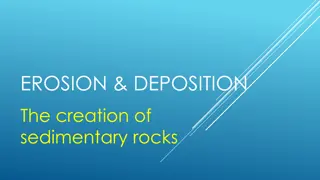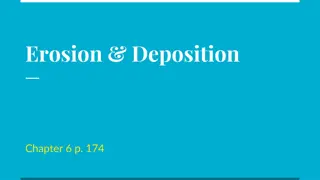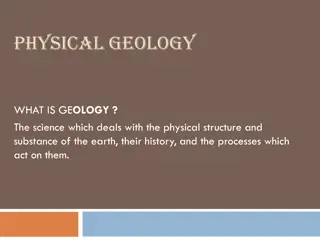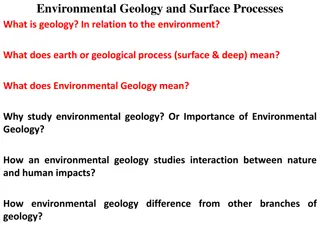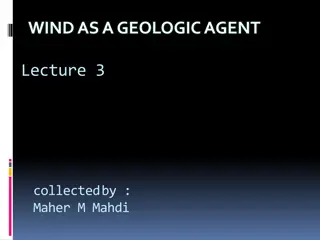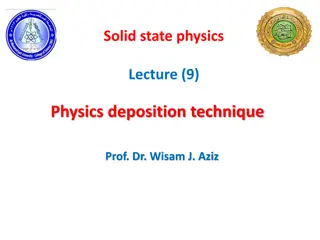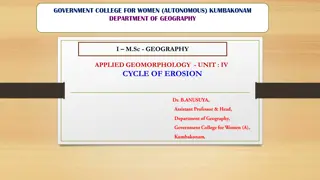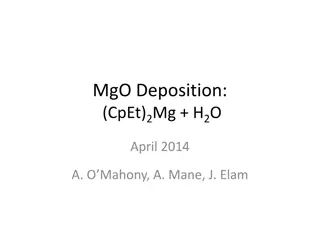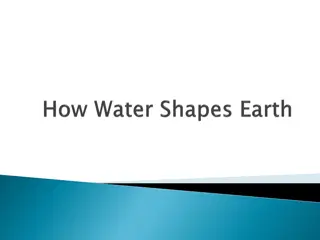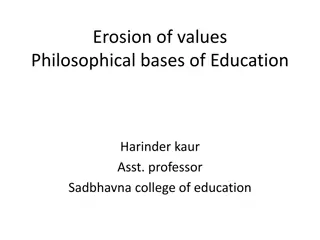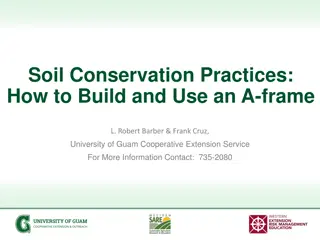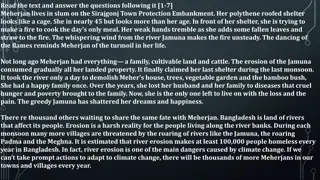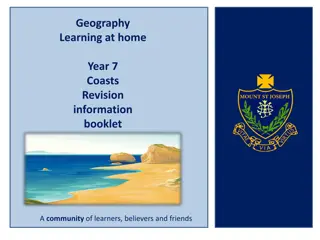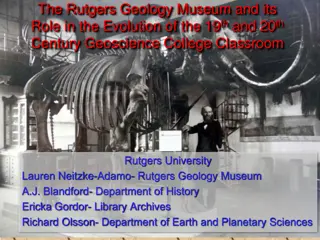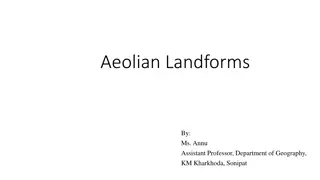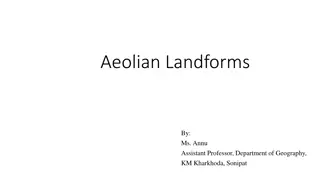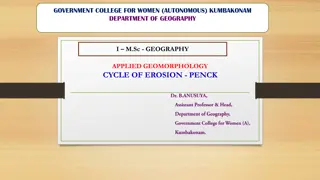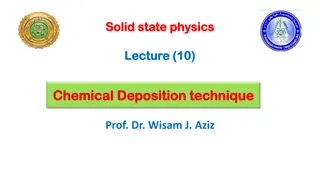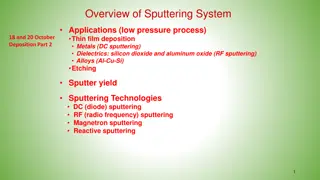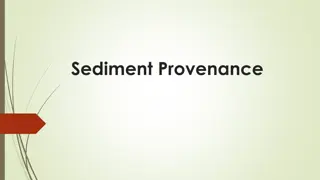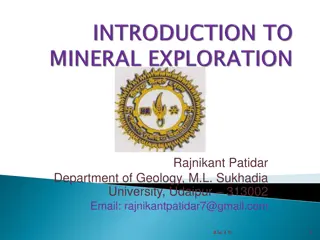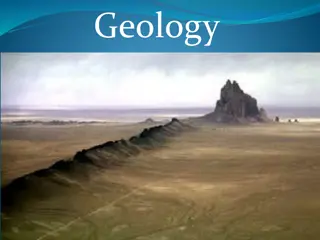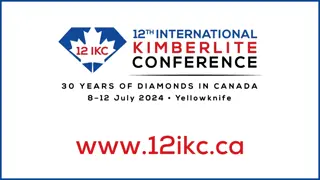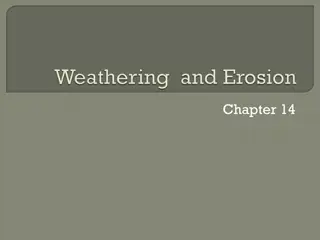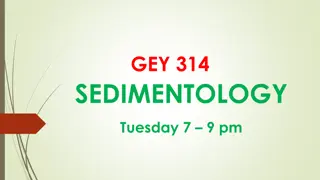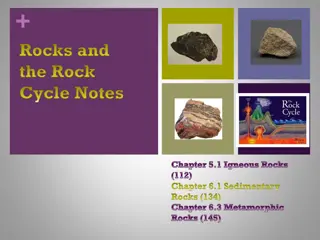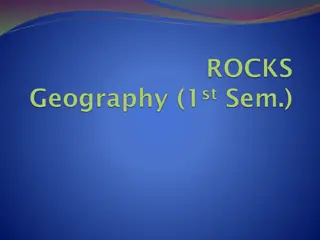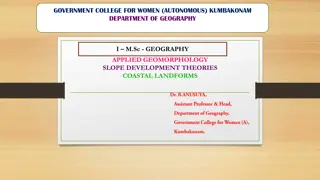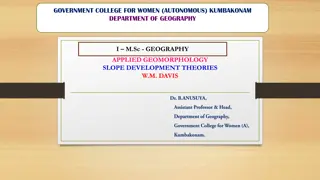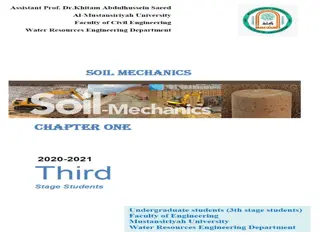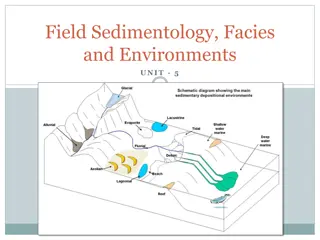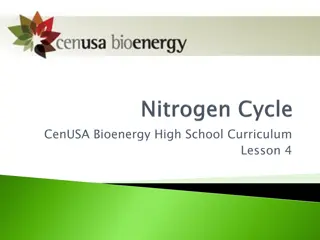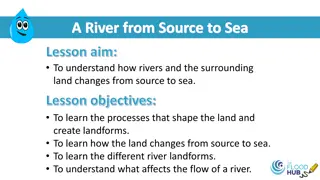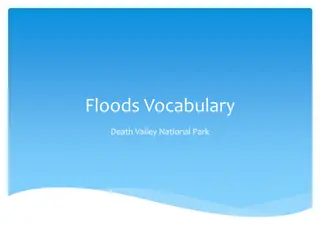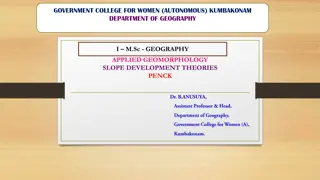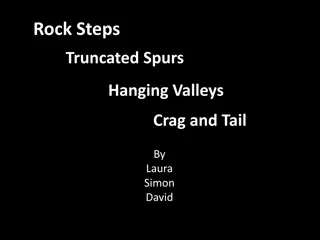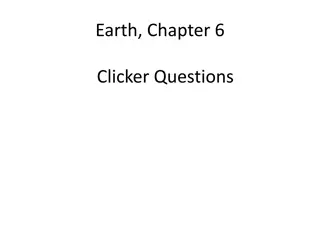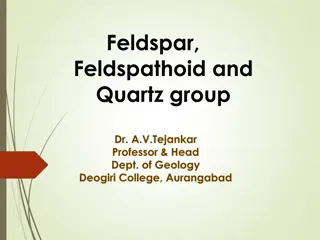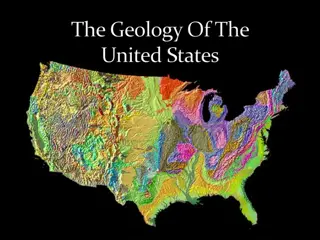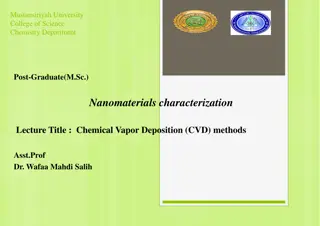Understanding Erosion and Deposition Processes in Geology
Explore the dynamic forces of erosion and deposition in geology, from the constructive and destructive processes to weathering, erosion agents, rates of erosion, sorting of sediment, deposition, and different depositional environments where sediments settle. Delve into how factors like weather, climate, topography, and rock type influence these geological processes.
Download Presentation

Please find below an Image/Link to download the presentation.
The content on the website is provided AS IS for your information and personal use only. It may not be sold, licensed, or shared on other websites without obtaining consent from the author. Download presentation by click this link. If you encounter any issues during the download, it is possible that the publisher has removed the file from their server.
E N D
Presentation Transcript
Chapter 5 Erosion and Deposition The Erosion-Deposition Process
Constructive vs. Destructive Constructive process build up features on Earth s surface Lave erupting from a volcano hardens and forms new land on the area where lava falls. Destructive process tear down features on Earth s surface Hurricane can wash part of a shoreline into the sea
Weathering The breakdown of rock. Chemical weathering which changes the mineral composition of rock Mechanical (Physical) weathering breaks rock into smaller pieces without changing the composition Is a destructive process Weathering Agents-water, wind, and ice Water can dissolve minerals in rocks Wind can grind and polish rocks by blowing particles against them Ice can break a rock apart as it expands
Erosion The removal of weathered material from one location to another. Agents of erosion-water, wind, glaciers, gravity
The Rate of Erosion Factors that affect the rate of erosion include weather, climate, topo-graphy, and type of rock Strong winds transport weathered rock more easily than gentle breeze Weathered rock moves faster down a steep hill than a flat area Erosion occurs faster on barren land than on land covered with vegitation Rate of erosion sometimes depends on the type of rock
Sorting Erosion affects level of sorting The separating of items into groups according to one or more properties Poorly sorted sediment, moderately sorted sediment, well-sorted sediment
Deposition Constructive Process Is the laying down or settling of eroded material
Depositional Environment Sediments deposited in locations on land, along coast, or in other oceans Swamps, deltas, beaches, barrier island, marshes, and the ocean floor Environment where sediment is transported and deposited High-energy environments (rushing rivers, ocean shores with large waves, and deserts with strong winds) Low-energy environments (deep lakes and areas of slow-moving air or water)
Landforms Mountains, valleys, plains, sea cliffs, and beaches Characteristics-structure, elevation, and rock exposure Can be observed to determine whether destructive forces (erosion), constructive forces (deposition) produced landforms
Landforms Created by Erosion Landforms can have features that are produced by erosion (often tall, jagged structure with cuts in layers of rock) 1) Landforms formed by erosion can expose several layers of rock 2) Different rates of erosion can result in unusual landforms when some rocks erode and leave more erosion-resistant rocks behind 3) Glacial erosion and coastal erosion form unique landforms
Landforms Created by Deposition Landforms created by deposition are often flat and low-lying Wind deposition form deserts of sand Deposition also occurs where mountain streams reach the gentle slopes of wide, flat valleys Alluvial Fan-an apron of sediment forms where a stream flows from a steep, narrow canyon onto a flat plain at the foot of a mountain
Landforms Created by Deposition cont d Water traveling in a river can slow due to friction with the edges and the bottom of the river channel Deposition can form sandbar Endpoint for most rivers in where they reach a lake or an ocean and deposit sediment Wave action at a shoreline moves and deposit sediment


